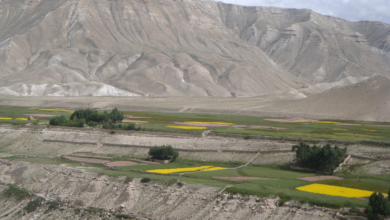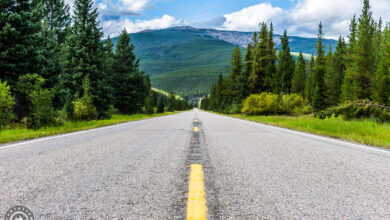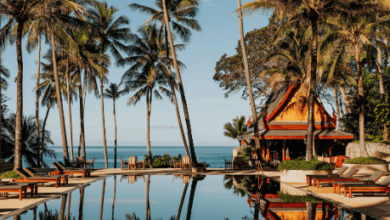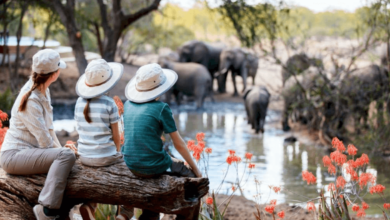EVEREST BASE CAMP TREK INFORMATION (EBC TREK GUIDE)
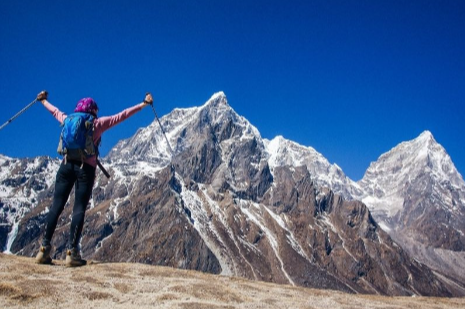
Embarking on the trek to Everest Base Camp is a dream for many adventure seekers and nature enthusiasts. This blog aims to provide you with comprehensive information about the Everest Base Camp trek, covering everything from the reasons to trek to EBC to practical tips for a successful journey.
Why Trek to Everest Base Camp?
Trekking to Everest Base Camp offers an unparalleled opportunity to witness the awe-inspiring beauty of the Himalayas, including iconic peaks like Everest, Lhotse, and Nuptse. The trek also allows you to immerse yourself in the rich Sherpa culture, visit ancient monasteries, and experience the warmth and hospitality of the local people.
How to Trek to Everest Base Camp?
The Everest Base Camp trek typically starts with a flight from Kathmandu to Lukla, followed by a multi-day trek through the Khumbu region. The trail passes through picturesque villages, lush forests, and rugged terrain, culminating in the base camp of the world’s highest mountain.
What is Not So Great About Everest Base Camp Trek?
While the Everest Base Camp trek is a rewarding and unforgettable experience, it does come with its challenges. The trek involves long hours of walking, high altitudes, and unpredictable weather conditions. Altitude sickness is a common concern, and the basic teahouse accommodations may not offer the same level of comfort as luxury lodges.
How Long Does It Take to Hike the Everest Base Camp Trek?
The standard Everest Base Camp trek takes around 12-14 days to complete, including acclimatization days. However, the duration can vary depending on your itinerary and fitness level.
How Hard/Challenging is the Everest Base Camp Trek?
The Everest Base Camp trek is considered moderately challenging, with long days of hiking, steep ascents and descents, and high altitudes above 5,000 meters. Physical fitness, mental resilience, and proper acclimatization are essential for a successful trek.
When is the Best Time to Trek to Everest Base Camp?
The best time to trek to Everest Base Camp is during the pre-monsoon (spring) season from March to May and the post-monsoon (autumn) season from September to November. These months offer clear skies, moderate temperatures, and stable weather conditions.
What Can I Do to Avoid Altitude Sickness?
To avoid altitude sickness, it’s essential to acclimatize properly by ascending gradually, staying hydrated, and listening to your body. Diamox medication can also help prevent and alleviate symptoms of altitude sickness.
What are the Tea Houses Like on the Everest Base Camp Trek?
Tea houses along the Everest Base Camp trek route provide basic accommodation with shared rooms and communal dining areas. The facilities may vary from simple to more comfortable, and hot showers and charging facilities are usually available for a fee.
What is the Best Food to Eat on the Everest Base Camp Trek? What is the Food Like?
Local dishes like dal bhat (rice and lentils), momos (dumplings), and noodle soups are popular choices on the Everest Base Camp trek. These hearty meals provide the necessary energy and warmth for trekking in the mountains.
Can I Get Phone Coverage or WIFI on the Everest Base Camp Trek?
While phone coverage and WIFI are available at some teahouses along the Everest Base Camp trek route, the connectivity may be limited or unreliable. It’s best to inform your loved ones in advance about the communication challenges during the trek.
What Should I Bring to Everest Base Camp?
Essential items to pack for the Everest Base Camp trek include moisture-wicking clothing, sturdy hiking boots, a warm sleeping bag, a headlamp, sunscreen, a first aid kit, and a camera. It’s crucial to pack light but efficiently for the trek.
Do I Need a Porter or Guide? Can I Trek Solo to EBC?
While it’s possible to trek solo to Everest Base Camp, hiring a guide and porter is recommended for safety, navigation, and logistical support. Experienced guides can enhance your trekking experience and provide valuable insights into the local culture.
How Much Does the Everest Base Camp Trek Cost?
The cost of the Everest Base Camp trek can vary depending on factors like the duration of the trek, the level of service provided, and the time of year. On average, the trek cost includes permits, accommodation, meals, transportation, guide, and porter fees.
Do I Need Permits to Trek to Everest Base Camp?
Yes, you will need permits to trek to Everest Base Camp, including the Sagarmatha National Park entry permit and the TIMS card (Trekkers’ Information Management System). These permits support conservation efforts in the region and help ensure your safety during the trek.
How Can I Trek Sustainably and Environmentally Friendly?
To trek sustainably and environmentally friendly, it’s essential to minimize waste, carry out your trash, respect the local culture and customs, and support eco-friendly lodges and businesses along the trail. Leave no trace and leave the mountains as you found them.
How Do I Get to Lukla? Where Can I Start Trek to Everest Base Camp?
You can reach Lukla by taking a short flight from Kathmandu. Lukla serves as the starting point for the Everest Base Camp trek, and the trekking route begins from Lukla towards Namche Bazaar and then continues to Everest Base Camp.
Do I Need to Tip Guide and Porter on the Everest Base Camp Trek?
Tipping guides and porters is a common practice on the Everest Base Camp trek as a gesture of appreciation for their hard work and dedication. The amount of the tip can vary but is typically based on the level of service provided.
Read more Airborne Hospitality: Providing Relaxed Airport Transfers in Victoria Falls
Is It Safe to Trek to Everest Base Camp?
Trekking to Everest Base Camp is generally safe when proper precautions are taken, including acclimatization, following safety guidelines, and hiring experienced guides. However, the trek does come with inherent risks, such as altitude sickness and unpredictable weather conditions.
How to Prepare for Everest Base Camp Trek?
To prepare for the Everest Base Camp trek, it’s essential to engage in regular cardiovascular exercise, strength training, and hiking to build your stamina and endurance. Proper gear selection, acclimatization, and mental readiness are also crucial for a successful trek.
How to Find a Good Trekking Company? Sherpa Expedition and Trekking
Choosing a reputable trekking company like Sherpa Expedition and Trekking can enhance your Everest Base Camp trekking experience. Look for companies with experienced guides, positive reviews, and a commitment to safety and sustainability.
What Should Not Take to EBC Trek?
Avoid packing unnecessary items like heavy electronics, excessive clothing, and bulky gear that can weigh you down during the trek. It’s essential to pack light and efficiently for the Everest Base Camp trek.
Where is the Everest Base Camp (EBC)?
Everest Base Camp is located at the foot of Mount Everest in the Khumbu region of Nepal. The base camp serves as a starting point for climbers attempting to summit the world’s highest peak.
History of Everest Base Camp
Everest Base Camp has a rich history as a staging area for numerous expeditions to Mount Everest. The base camp has hosted legendary climbers and mountaineers who have attempted to conquer the world’s highest peak.
What Type/Tribe of People Reside in the EBC Area? Who are the Sherpa People?
The indigenous Sherpa people are the main inhabitants of the Everest Base Camp area. Known for their mountaineering skills, hospitality, and rich cultural heritage, the Sherpas have played a vital role in supporting trekkers, climbers, and expeditions in the Himalayas.
In conclusion, trekking to Everest Base Camp is a life-changing experience that offers a unique blend of adventure, natural beauty, and cultural immersion. By being well-prepared, respectful of the environment and local communities, and open to the challenges and rewards of the trek, you can create lasting memories and forge a deep connection with the Himalayas.
